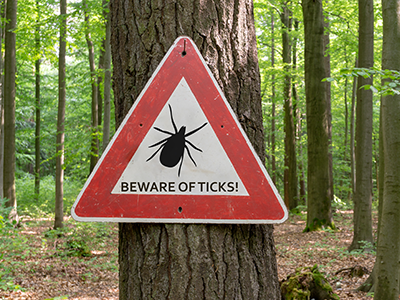The grass is green and the flowers are blooming, which makes it the perfect time of year for your kids to enjoy their favorite outdoor activities. During these warm months it’s very important to make sure your child is protected against all bug bites but specifically it’s the time to watch out for ticks! Roberta DeBiasi M.D., M.S., chief of the Division of Infectious Diseases and co-director of the Congenital Zika Program at Children’s National Health System, answers some questions about how to avoid tick bites and Lyme disease.
The black-legged tick, also known as the deer tick carries bacteria called Borrelia burgdorferi which is transmitted through a bite causing Lyme disease.
How common is Lyme disease during the spring and summer seasons?
Lyme disease is a common illness around this time of the year because more people are outside enjoying the warm weather. At least half of the patients doctors see with Lyme disease are children and though the vast majority of ticks do not carry the bacteria, living on the eastern side of the country leaves children at a higher risk for being infected with Lyme disease.
What are the most effective ways to prevent Lyme disease?
There a few ways that you can reduce being exposed to tick bites. If you know that you will be exposed to grassy or wooded areas, try to wear clothes that will cover your skin. Always be sure to spray areas of your body where the skin is exposed with insect repellant that contains DEET. This ingredient can be found in many repellent products and is available in a variety of liquids, lotions and sprays. When you come inside from the great outdoors, be sure to check yourself out for any ticks bites or ticks that may be attached to your skin.
If my child has a tick bite, what steps should I take to make sure it isn’t more serious?
If there is a tick attached to the skin or if you notice a tick bite it is important to know that it takes 48-72 hours (2 to 3 days) before the bacterial germ is transmitted to the skin. If the tick is removed from the skin within 24 hours there should be no reason to worry or take any further steps. Please note there is a specific way to remove a tick, here’s how:
- Get a pair of tweezers.
- Use the tweezers to grab the tick close to the skin by the head or mouth.
- Gently pull the tick at a 45 degree angle and the tick should come right off.
- Avoid using tactics like burning the tick off your skin or using olive oil to remove the insect. These strategies can not only be harmful to you but often increase the chance of disease transmission.
I didn’t find the tick immediately, and it has been attached to my child for more than 3 days, should I immediately see a doctor?
After safety removal of the tick, observe the area of where the tick was attached for up to 30 days. Although it seems like a long time, the earliest sign of Lyme disease is an area of redness that may begin to expand over time. It’s important to note that Lyme disease is not painful or itchy, so if your child is experiencing these symptoms it is probably an allergic reaction or something more serious.
Is it possible to have Lyme disease without signs of a rash?
An estimated 70 percent of people with Lyme disease will experience a rash or area of redness but the other 30 percent will not get a rash or they will not be able to see the rash because the tick was in a hidden spot. If this occurs your child may experience the next stage of the disease, early disseminated Lyme disease. Early signs are flu-like symptoms, including headaches and achiness.
 https://riseandshine.childrensnational.org/wp-content/uploads/2019/06/Girl-watching-fireworks-feature.png
300
400
Rise and Shine
https://riseandshine.childrensnational.org/wp-content/uploads/2017/11/childrens_riseandshine_logo.jpg
Rise and Shine2025-06-24 16:21:072025-06-30 16:05:30Firework safety for children: A pediatrician’s guide to keeping summer celebrations safe
https://riseandshine.childrensnational.org/wp-content/uploads/2019/06/Girl-watching-fireworks-feature.png
300
400
Rise and Shine
https://riseandshine.childrensnational.org/wp-content/uploads/2017/11/childrens_riseandshine_logo.jpg
Rise and Shine2025-06-24 16:21:072025-06-30 16:05:30Firework safety for children: A pediatrician’s guide to keeping summer celebrations safe





















Leave a Comment
Want to join the discussion?Feel free to contribute!